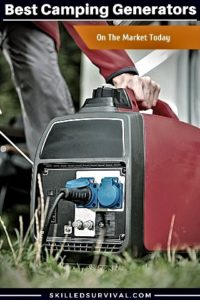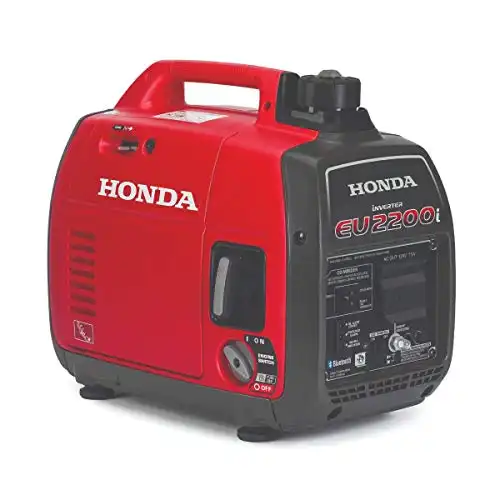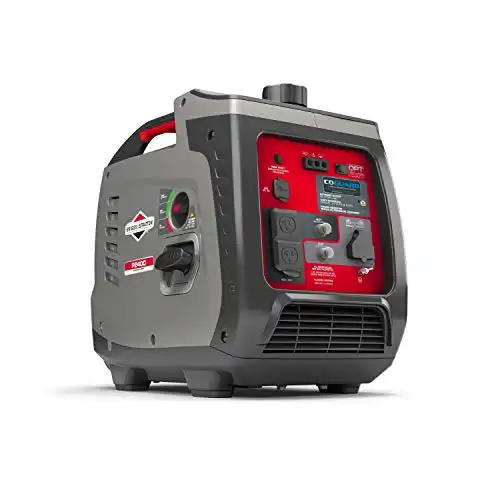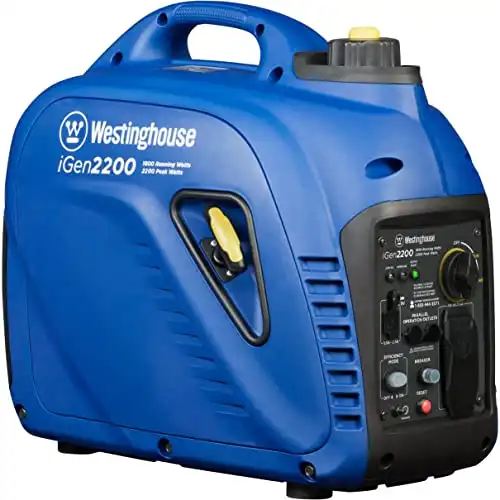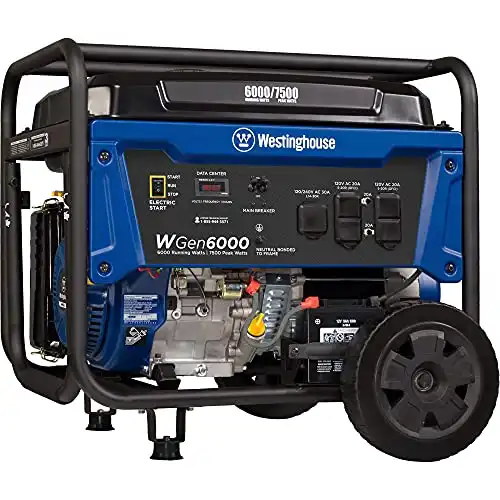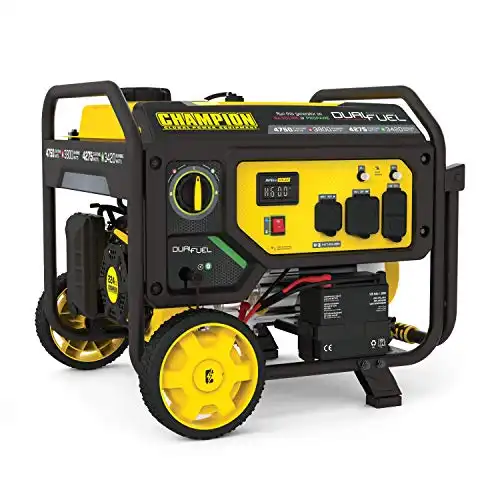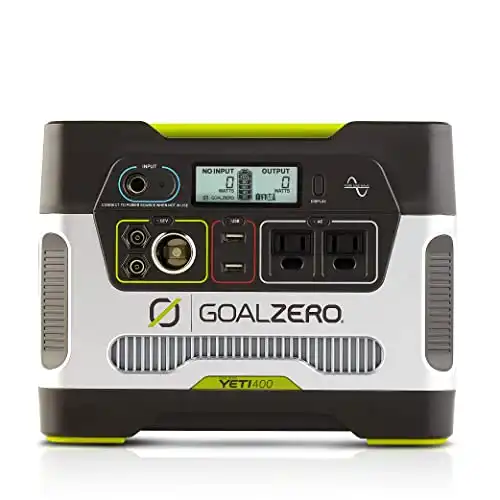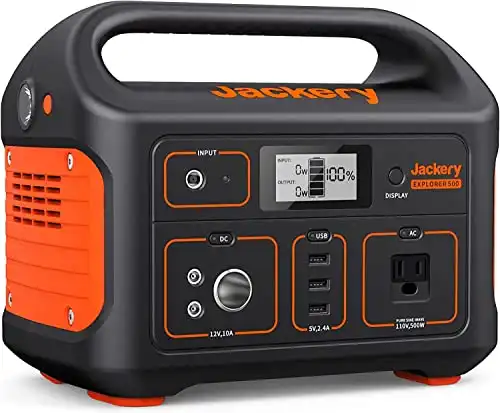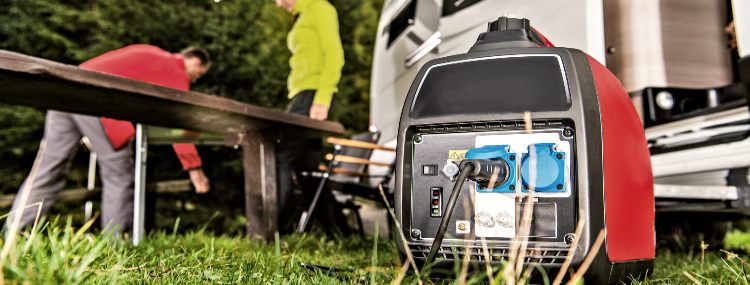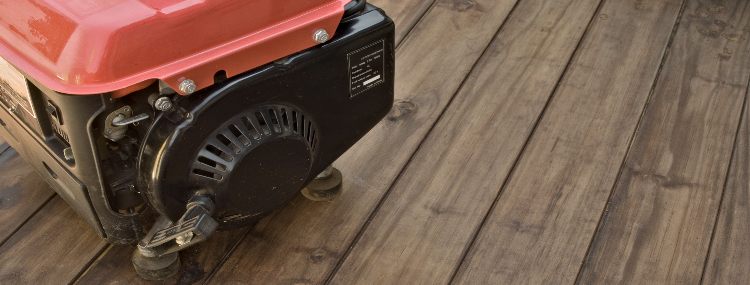If You Want A Quiet Camping Generator, You’re In The Right Place
Everyone who begins camping quickly realizes how much better it could be with some extra luxuries.
But any camping gear is a delicate balance between size, weight, price, etc…
There are ALWAYS tradeoffs!
But the last thing you want is to regret a purchase.
And camping generators are a large enough investment; you want to get it right the first time.
That’s why today, I will use my Engineering, Gear Design, Manufacturing, and Preparedness background to talk about the following:
TABLE OF CONTENTS
Best Camping Generators For Sale
→ Best Lightweight Generators
→ High-Powered Portable Generators
→ Solar-Powered Generators
Why Get A Portable Generator
Best Camping Inverter Features
Sizing A Generator For Camping
Quieting A Generator For Camping
Where To Run Your Generator
Are You Ready For The Tough Times Ahead? Take My 60 Sec Quiz To See If You’re Part Of ‘The Fragile Masses’ Or Not… Start Quiz Now!
Best Camping Generators On The Market Today
Let’s break things down into 3 main portable generator categories:
1. Best Lightweight Generators For Camping
Lightweight generators can supply smaller camper setups.
They’re often paired with teardrops, truck bed campers, popups, or bug-out trailers.
Honda EU2200i 2200 Watt Portable Inverter Generator
- Weight: 46.5lbs
- Decibels: 57dB
- Wattage: 2200 watts
- Engine Type: 4-stroke gasoline
- Run Time: 8 hours at 25% load
- Tank Volume: 0.95 gallon
- Plugs/Connections: 120V Outlets (2), 12V “cigarette lighter” Outlet (1)
Long the gold standard in generators, the Honda EU2200i is quiet and fuel-efficient.
It can usually provide enough power to:
- Run a couple of laptops
- Charge some battery banks
- And keep a small coffee maker running
I should know since it’s an updated model of the same generator my local search and rescue group uses.
It helps to power our mobile command center for long days in the field.
The EU2200i is reliable and easy to store and use, even with infrequent use.
The carbon monoxide detector is a great safety addition.
The new version allows you to operate and monitor it via a smartphone app remotely!
PROS
- Lightweight and quiet
- Fuel efficient and reliable
- Plus, it can run in parallel with other Honda generators with an accessory cord.
CONS
- Expensive for the rated power
- No dedicated USB outlets
↓ New Honda Bluetooth Generator EU2200i Exposed ↓
Briggs & Stratton P2400 PowerSmart Series Inverter Generator
- Weight: 50.4lbs
- Decibels: 59dB
- Wattage: 2400 watts
- Engine Type: 4-stroke gasoline
- Run Time: 8 hours
- Tank Volume: 1 gallon
- Plugs/Connections: 125V Outlets (2), USB 5V,1A outlet (1)
The B&S P2400 is the smallest in the Power Smart series of inverter generators.
It weighs just 50.4 lbs! So it’s portable and makes for a great camp generator for moderate uses.
It’s also quiet and compact, an excellent selling point for this camp generator.
The feature set and specifications are similar to more expensive models.
Yet, the Briggs & Stratton P2400 remains affordable and reliable.
Even better, the small 79cc engine is easy to tune/service if you have experience with small engines.
PROS
- Lightweight and compact
- Quiet
- Affordable
CONS
- Some users have had issues with spark plug fouling after extended use
- Manufacturer spare parts are easy to buy, but service is reportedly not the best
↓ Briggs And Stratton P2400 Generator Review ↓
Westinghouse Super Quiet & Lightweight Portable Inverter Generator
- Weight: 52.8lbs
- Decibels: 52dB
- Wattage: 1800 Watts
- Engine Type: 4-stroke gasoline
- Run Time: 12 hrs
- Tank Volume: 1.2 gallon
- Plugs/Connections: 120V Outlets (2), 5V USB Outlets (2)
The Westinghouse iGen is an excellent choice for an emergency backup or a camp generator.
It’s small and lightweight enough to fit nearly anywhere, even in the trunk of a compact car.
The 1800W peak output is strong enough to run most essentials.
But it’s also quiet enough to do so even without waking up the neighbors.
It’s highly rated and receives high marks for both affordability and value.
Note: There’s been an alarming number of reported counterfeit units of this model. So be sure to buy from a reputable seller.
PROS
- Lightweight and compact
- Can run in parallel with other Westinghouse generators (extra cable needed)
CONS
- Counterfeits are of lower quality, especially in markets outside the U.S.
↓ Westinghouse iGen2200 Portable Generator Review 2022 ↓
2. High-Powered Portable Generators For Camping
Larger campers and motor homes require more power.
Why? Because they have extensive lighting, advanced climate controls, entertainment, and kitchen appliances.
Westinghouse Outdoor Power Equipment 7500 Peak Watt Generator
- Weight: 174 lbs
- Decibels: 64dB
- Wattage: 6000 Watts
- Engine Type: 4-stroke gasoline
- Run Time: 13 hours
- Tank Volume: 6.6 gallons
- Plugs & Connectors: 120V Outlets (4), 120/240V TwistLock Outlet (1)
The Westinghouse WGen6000 is an excellent option for portable power.
The transfer switch-ready outlet allows you to connect to a 30A inlet box at home. And the 120V outlets can handle R.V.s and other in-camp or on-the-job power needs.
The controls are easy to use, and the rubber outlet covers are welcome in case of bad weather.
With a large 6.6-gallon tank, the WGen6000 can help keep things powered for up to 13 hours, depending on the load.
It has an electric starter, which isn’t available on the smaller models in the WGen lineup.
PROS
- Solid run time on one tank of fuel
- Lots of plugs!
CONS
- Noisier than smaller options
↓ Westinghouse WGen6000 Portable Generator Review ↓
Champion Power Equipment 23800-Watt Dual Fuel Portable Generator
- Weight: 119 lbs.
- Decibels: 68dB
- Wattage: 3800 Watts
- Engine Type: 4-stroke dual fuel (gasoline OR propane)
- Run Time: 14 hrs
- Tank Volume: 4.7 gallons (gasoline) or 20 gallons (propane)
- Plugs/Connectors: 120V Outlets (2), 120V TwistLock Outlet (1), 120V RV Outlet (1)
This Champion generator is a relatively affordable high-powered generator.
It’s an excellent option for both motor homes and emergency use.
It’s well-built and provides a wide range of plugs.
These plug options allow you to connect everything from extension cords to R.V. pins.
The dual-fuel design gives you versatility and allows you to take advantage of inexpensive propane.
That way can use BBQ canisters (suggested 20-gallon size) when available.
Yet, you can still be ready to use regular unleaded gasoline if needed.
Finally, it has easy-to-use controls and simple fuel crossover valves make it user-friendly.
Plus, it includes the addition of an electronic starter.
PROS
- Dual Fuel design gives you options.
- Electronic starter saves you from pulling a starter cord
CONS
- Somewhat loud but manageable
- Not as fuel-efficient as other models
↓ Champion Dual Fuel Generator Long-Term Review ↓
3. Solar-Powered Generators For Camping
And the newest segment is solar “generator” systems (i.e. Power Stations).
These combine large solar panels with self-contained battery banks.
Newer solar generators even have electronic current management hardware.
This advanced hardware gives users on-demand energy harvested and stored from the sun.
Goal Zero Yeti 400 Portable Power Station
- Weight: 29 lbs
- Decibels: 0dB
- Wattage: 600 Watts
- Charging Type: Solar photovoltaic cells, wall A.C. outlet, or vehicle D.C. outlet
- Capacity: 33Ah
- Plugs/Connectors: 120V Outlets (2), 5V USB Outlets (2), 12V “cigarette lighter” Outlet (1), 12V Accessory Outlets (2)
In recent years, solar charging systems have made an enormous impact.
They’ve shown up for small direct changing panels to large battery banks.
And Goal Zero may be the most recognized brand out there.
The Yeti 400 is a mid-range battery bank of 33Ah.
This power capacity is large enough to keep small electronics running (up to laptops).
And even run larger appliances for a few hours.
This seems like a small amount of power compared with traditional generators.
And you’d be right, but it also comes with ZERO noise and can be charged via solar panels.
When quiet is at a premium, solar and battery bank systems like the Yeti 400 make an attractive option.
PROS
- Silent
- Charges from solar panels
- Compact
- Lots of plug options
CONS
- Can’t run large appliances or vehicles/home
- Expensive
↓ Off Grid Power – Goal Zero Yeti 400 & Boulder 50 Solar Panel Review ↓
Jackery Portable Power Station Explorer 500
- Weight: 13.3 lbs
- Decibels: 0dB
- Wattage: 500 Watts
- Charging Type: Solar photovoltaic cells, wall A.C. outlet, or vehicle
- DC outlet Capacity: 24Ah
- Plugs/Connectors: 120V Outlets (2), 5V USB Outlets (3), 12V “cigarette lighter” Outlet (1), 12V Accessory Outlets (2)
Jackery has put its primary focus on developing excellent solar-powered generators.
The Explorer 500 is compact and includes well-designed components at an affordable price.
This unit is lighter and more portable than comparable capacity systems.
It has just as many (if not more) outlet options to keep you powered up.
Like most solar systems, the battery bank and solar cells are sold separately. So this adds to the overall cost but allows you to tailor the system to your needs.
For example, you can chain together several solar cells to charge much more quickly!
PROS
- LCD power management display
- Great capacity
- Affordable
CONS
- Slow to charge, like all solar systems
↓ Reviewing The Jackery Explorer 500 Power Station ↓
Why You Should Get A Portable Generator
We go camping to escape the noise and technology of our daily lives.
But while we’re away – there are a few luxuries we don’t think we can live without.
For example, most of us use our phones for photos, maps for navigation, and coffee makers for a morning brew!
At night, we depend on lights to make camp chores easier and prepare for bed, plus a bit of winddown reading.
And for some of us, critical medical devices (like CPAP machines) require power no matter where we are.
And there are always those times when the power goes out at home.
That’s when these portable “camping” generators can quickly become survival heroes.
It can function as a small backup generator for your home.
Sure, it won’t power your entire house, but it will run a few appliances – which is better than nothing!
I work from home, so I feel the full effects of every small blip in our power.
So I have to think about how I work from home without power.
Not to mention the stress of keeping the food in the fridge and freezer from spoiling in an emergency.
The right “camping” generator can be a good option for both scenarios.
These generators are perfect for prepping and filling the gap between battery banks and massive stationary generators.
A camping one is portable, compact, and easy to use.
Plus, most come with convenient connectors and user-friendly controls.
Many are incredibly fuel-efficient and quiet enough to use in a crowded campground.
So you can use the generator without making the neighbors angry, whether at a campground or home.
This quiet feature becomes a significant benefit in a long-term survival scenario.
It’s a way to keep your power capabilities to yourself!
As A Way To Introduce You To Skilled Survival, We’re Giving Away Our Ultimate Camping Essentials Checklist. Click Here To Get Your FREE Copy Of It.
Best Camping Inverter Features To Look For
There are several factors to selecting the right generator for YOUR specific needs.
So it’s best to start working through these factors by honestly evaluating your needs.
This process will help narrow down your generator options.
This analysis will ensure you get a generator that fits your needs.
But without paying extra for features you’ll never use.
Power Output
Watts is the way generators measure power output, just like light bulbs.
An incandescent lightbulb usually consumes between 50-100 watts of power.
In contrast, newer LED bulbs consume about 90% less for the same light level.
Using watts makes it easy to compare how powerful each model is.
There is a wide range of power levels on the market:
The 400-watt solar power systems could only power a few incandescent lights.
To 10,000-watt gasoline-powered generators, which could light up a whole field.
Understanding your power needs comes down to knowing what appliances you need to run.
AND how power-hungry each device is over time.
Quiet Operation
A noisy generator is one of the most universally hated sounds in camp.
This is even more true if you plan to camp near others or need to keep the generator on into the evening.
Decibel (dB) is the measurement of Sound level.
A typical conversation is around 60dB, while a vacuum cleaner is roughly 70 dB.
Prolonged exposure to anything higher than 80dB is considered hazardous.
And high levels of sound exposure can cause permanent hearing loss.
So, a quieter generator is preferable.
But there are also ways to muffle a noisier one with baffles and enclosures.
We’ll cover a few tricks and DIY options to lower any generator’s noise later in this article.
Portability
A combination of size and weight, portability is vital with a camp generator.
My truck is ALWAYS full when I leave for a camping trip with lots of camping essentials.
So a big generator that takes up half of the back doesn’t make sense.
Many of the larger models are portable with wheels and handles.
But they’re still difficult to pick up and put in the bed of a truck or trailer when it’s time to pack up.
Working with a smaller generator is much easier if your power needs are smaller.
The size most people are comfortable carrying around is usually smaller than 60 lbs.
Fuel Options
There are two main fuel options in portable generators: gasoline and propane.
Gasoline is readily available in most places.
And you may already be carrying it for some of the other toys you take camping.
Most smaller portable generators use gasoline.
But it’s not the most efficient fuel available.
Make sure to check the run times for a single tank.
Why? Because many gas-powered generators need 5-10 gallons of fuel per 24-hour operation.
The other option, propane, can be a little harder to find.
But most outdoor stores and home centers have a BBQ canister exchange or filling station.
Propane is much more efficient and clean-burning.
So a dual-fuel generator is a nice compromise.
But this second option is unusually only available on larger units.
One thing to consider when you evaluate fuel options and efficiency:
Manufacturers list most generators’ fuel efficiency and run times at 25-50% power capacity.
But as the engine ramps to full capacity, its fuel intake will increase dramatically.
Remember this when sizing your generator, as you don’t want to always operate at full capacity.
Traditional Inverter vs. Solar Generators
Most of the generators we’ll cover in this article are “inverter” generators.
These provide clean, stable A.C. power as their primary output.
A.C. generators are more fuel-efficient.
That’s why they can manage the engine throttle and provide the power needed at any given time.
You can also run a solar generator can in parallel to provide more power on the same circuit.
This advantage is thanks to advanced power management circuitry.
They’re an excellent choice for situations where you need power for extended periods.
Nowadays, the newest trend for camping is portable solar “generators.”
These are just large battery banks with advanced electronics.
These electronics help manage the charging and distribution of power.
And they also include a regulated D.C. or A.C. power on demand from stored energy.
Their silent operation and smaller footprint make them an attractive option for many.
But they have a smaller capacity and often take long periods of direct sun to charge fully via solar panels.
How To Size A Generator For Your Needs
The RIGHT size generator for YOU depends upon your power needs:
For example, do you plan to charge a few phones and your laptop, OR do you need to run an entire Class A motor home?
The difference in size is massive, depending on these needs.
Think about the situations in which you might want to use your generator.
Then sum up all the devices you need to run or charge simultaneously.
Here are some examples of the power needs for some common types of devices people run via generators:
- Smartphone (charging): 6 watts
- Laptop (charging): 30 watts
- LCD TV (operating): 50-100 watts
- Portable A.C. Unit (starting): 1700 watts
- Portable A.C. Unit (operating): 600 watts
- Mini fridge (starting): 2200 watts
- Mini fridge (running): 700 watts
These are just average ranges.
You can see that larger appliances take much more power to run.
A.C. and refrigeration units need even more power on startup when the compressor kicks on.
These power spikes can cause peak loads 2-3 times the normal operating range.
As stated earlier, it’s best not to run a generator at 100% capacity all the time.
You’ll want to avoid hitting full capacity at all times.
For example:
During peak times (like the compressor loads) or steady loads.
A margin of safety will help prevent premature wear and tear on the engine.
So you’ll want to add a safety factor of at least 30%.
With this total in mind as a guideline, you can weed out generators.
Those that are either too small or way too large for your needs.
As a very rough guideline:
Generators under 3000 watts are suitable for smaller camps.
But these will not consistently and efficiently run the larger appliances in an R.V.
↓ Generator Sizing For RVs With Josh, The RV Nerd ↓
As A Way To Introduce You To Skilled Survival, We’re Giving Away Our Ultimate Camping Essentials Checklist. Click Here To Get Your FREE Copy Of It.
As A Way To Introduce You To Skilled Survival, We’re Giving Away Our #78 Item Complete Prepper Checklist. Click Here To Get Your FREE Copy Of It.
How To Make A Generator Run Whisper Quiet
It’s always best to start with a generator that’s not extremely loud in the first place. But sometimes, you must muffle noise from even a quiet generator.
There are lots of ways to minimize the sound from your generator.
Solutions range from:
- Better positioning
- Adding noise baffles
- Or installing larger, higher noise-reduction mufflers.
Check out these options for some inspiration.
You can also make a small noise-muffling enclosure, which serves double duty as a rain shelter.
Keep in mind that any engine needs adequate fresh air intake and cooling.
So any enclosure needs ventilation, or you risk tripping the carbon monoxide sensors.
Or overheating the engine and reducing the lifespan of your generator.
Where To Run Your Generator (Or Where Not)
One of the most common questions with any generator is:
“Where do I put it while it’s running?”
It’s a question with a lot of considerations.
When finding a spot for your generator, look for a clean, dry surface with no flammable leaves or grass.
This is very important as the exhaust gasses and muffler are very hot.
They could start dry vegetation on fire if they come in contact with the muffler.
You also need protection from the rain/snow.
Always keep your generator dry and protected from moisture.
This helps to extend its life by keeping it from harmful corrosion.
Keep it under an awning, under the tailgate, under a rear bumper, or R.V. stairs.
They are all decent storage/run location options.
You can also reduce generator camp noise by putting it on the other side of your vehicle.
This setup is a simple solution unless you have close neighbors in camp on that side of your vehicle.
Final Thoughts
A small, portable generator is an excellent camping and survival gear addition.
It gives you the option to charge devices and run some essential appliances.
However, be sure to evaluate your needs realistically!
This is because generators go up in price fast as you get to larger power ratings.
Even if you’re far from home, you don’t have to give up all the comforts of modern life.
You’ll appreciate the conveniences on a particularly cold or rainy day in camp.
Jason K.
P.s. Are you ready for the tough times ahead?
Find out now by taking my short Readiness Score Quiz – it’s absolutely free.
Once complete, you’ll know exactly where you stand on the “fragile” vs.” resilient” spectrum.
So click here to start the Quiz….And don’t worry; the questions are so easy a 3rd grader could answer them.
Click on the image to begin the Quiz and find out once and for all if you’re part of “The Fragile Masses” or “The Resilient Few.”
The post Best Camping Generator To Generate Whisper Quiet Power appeared first on Skilled Survival.



